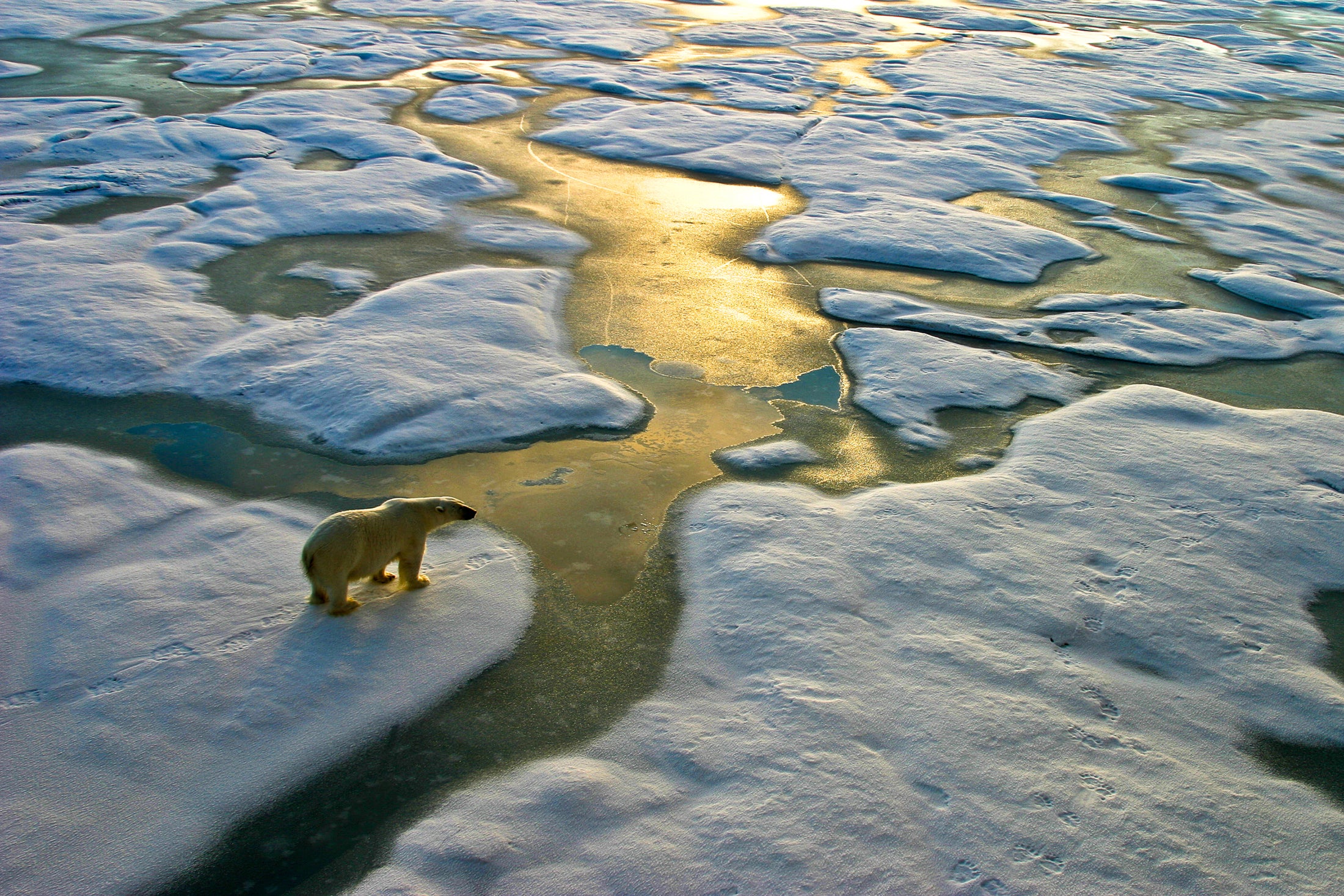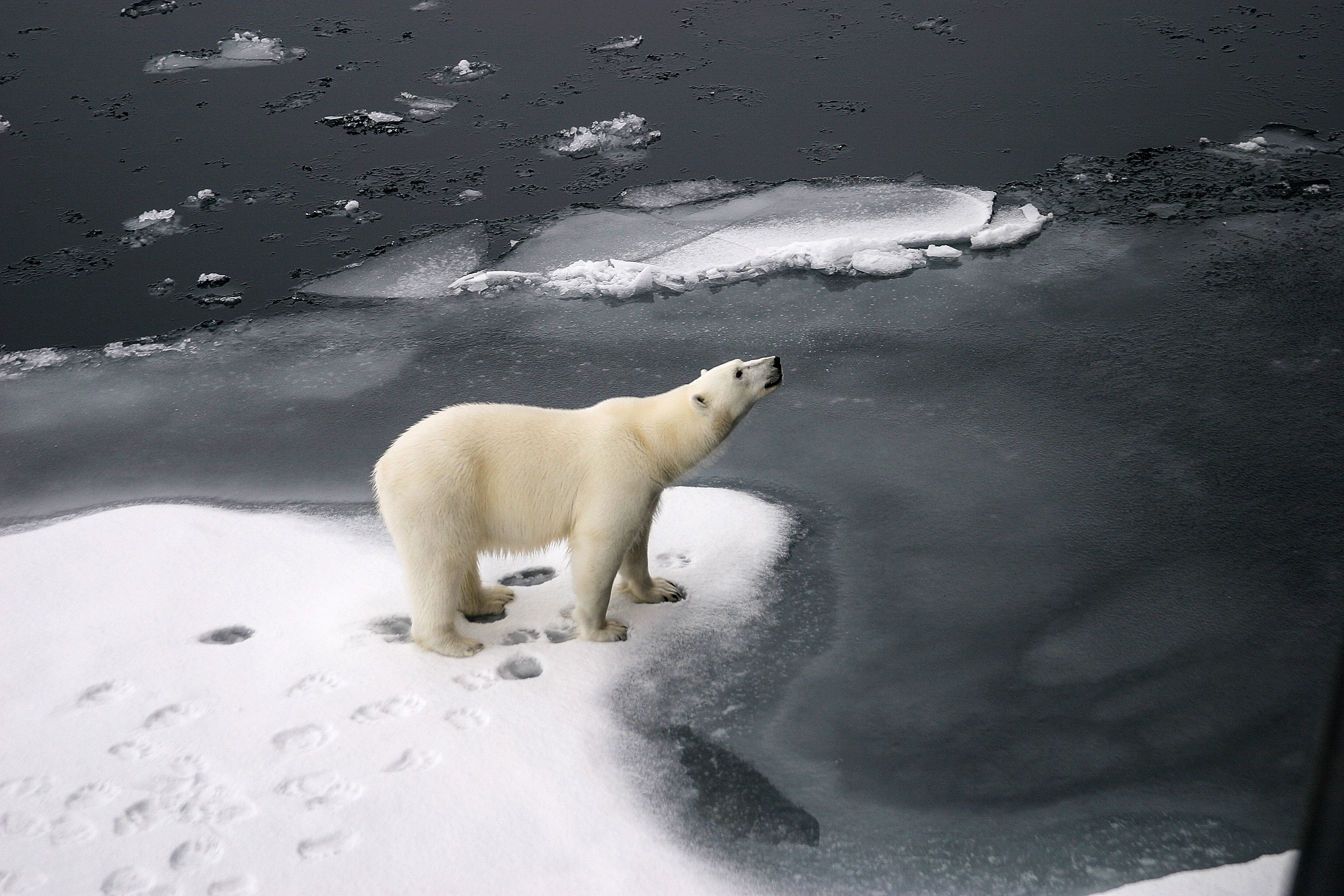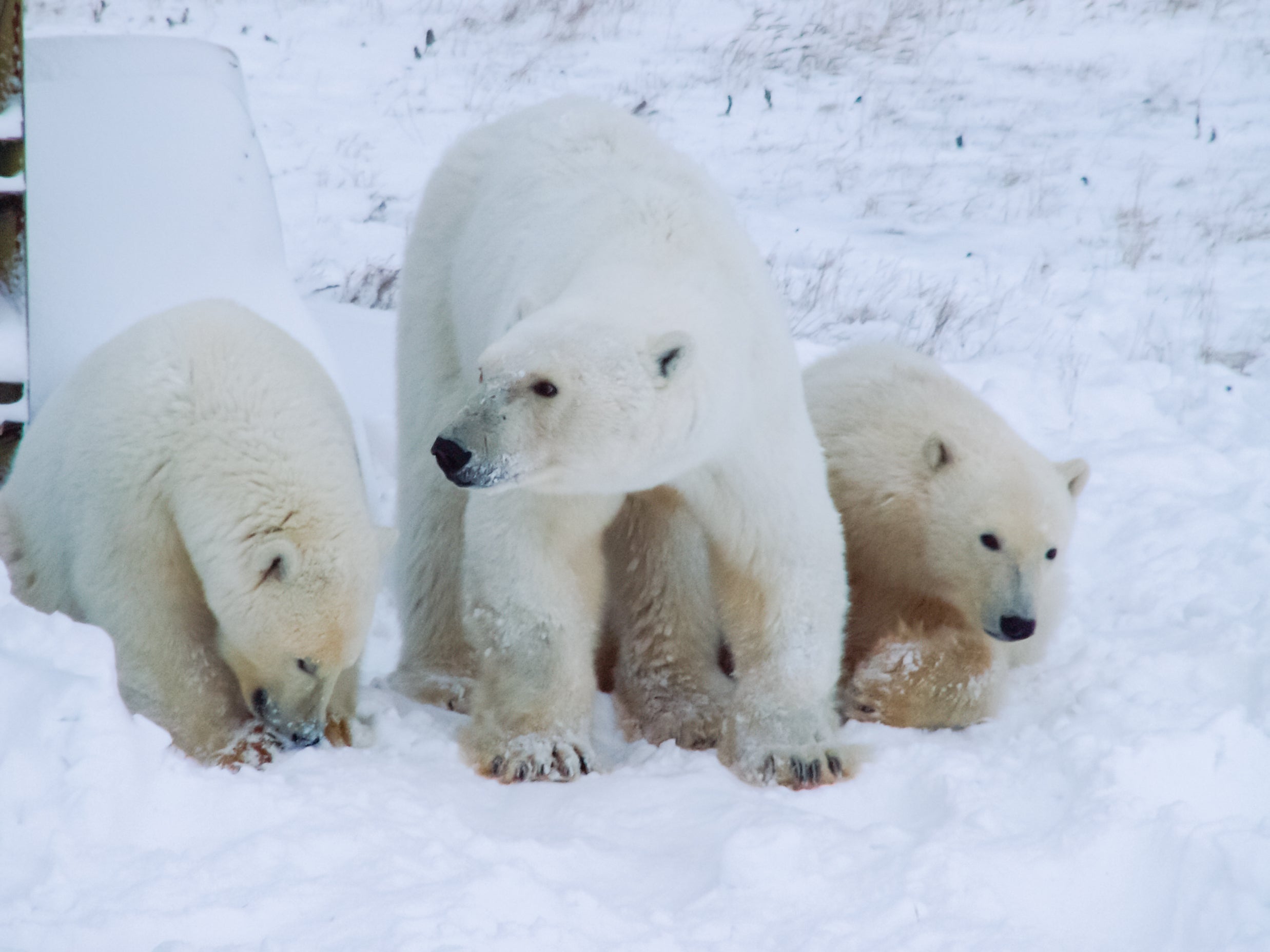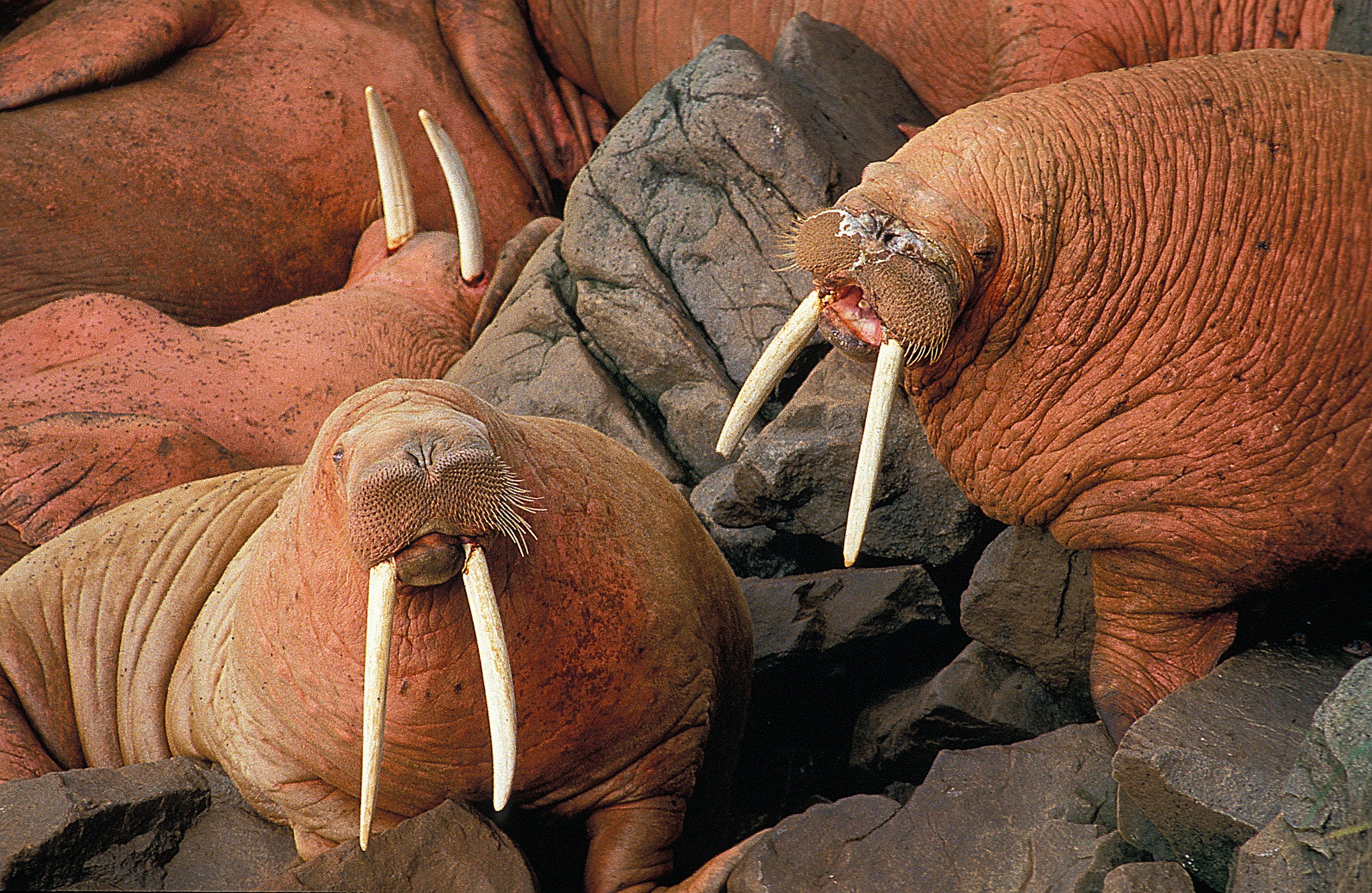Why Russia’s war in Ukraine is bad news for polar bears, too
The invasion is first and foremost a human tragedy but it is also dire for wildlife, stalling scientific work on the bears and other species threatened with extinction, writes Dino Grandoni

For three years, Eric Regehr travelled more than 2,000 miles to what he calls “the end of the world”.
Not even the coronavirus pandemic stopped the University of Washington biologist’s research on Wrangel Island, high above the Arctic Circle in Russia. When the pandemic grounded Regehr in 2020, his Russian colleagues continued monitoring the remote island’s polar bears, a carnivore many fear may decline as the world warms.
But after President Vladimir Putin’s troops invaded Ukraine early last year, Regehr’s research in Russia stalled. “It’s bad timing,” Regehr says, “because things are changing fast.”
Russia’s war in Ukraine is first and foremost a human tragedy. But it has been dire for wildlife and those who study it, too. Sanctions and other US policies meant to isolate Russia, along with the Kremlin’s crackdown on dissent, have chilled scientific collaboration between American and Russian biologists, leading to nixed research trips, cancelled conservation work, restricted funding and uncollected data related to species at risk of disappearing in the coming decades without human help.
The war’s effects reach far beyond Russia. Scientists studying sea turtles and migratory birds have lost access to tracking data gathered by Russian equipment. Many of those working to save the spoon-billed sandpiper, a bird that flies across east Asia, can no longer travel to its Russian nesting grounds.
Russia’s withdrawal from the international stage represents ‘the first time that we have a very clear step back in terms of biodiversity conservation’
Russia, given its sheer size, is key to maintaining Earth’s biodiversity. By one measure, the nation is home to more remaining wilderness than any other country in the world. Its massive forest acreage, also the biggest on Earth, is crucial for keeping carbon out of the atmosphere. The loss of knowledge of polar species in particular comes at a crucial time in the Arctic, a region warming faster than anywhere else in the world.
Since the 1970s, global cooperation on wildlife conservation has steadily grown, says Eduardo Gallo-Cajiao, a postdoctoral fellow also at the University of Washington who studies global governance. Now Russia’s withdrawal from the international stage represents, he says, “the first time that we have a very clear step back in terms of biodiversity conservation”.
Even during the height of the Cold War, the Soviet Union and United States could agree on at least one thing: the importance of protecting polar bears.

In 1973, the two nations put aside their differences to sign an agreement with three other Arctic countries to crack down on the rampant hunting of polar bears, many of which regularly cross borders in search of seals to eat. After the fall of the Soviet Union in the 1990s, Russia and the United States reasserted that cooperation. They created a bilateral agreement in 2000 to manage a polar bear population that migrates between western Alaska and eastern Russia.
When climate change started to thin the sea ice where Regehr’s team used to land their helicopter to study the bears, he turned to Russia’s Wrangel Island. Starting in 2017, he travelled there to study the population on solid ground. Some of the survey work was featured on the BBC series Frozen Planet II.
Then, when the coronavirus pandemic restricted his travel for two years, Russian colleagues he had trained continued to collect data. The bears’ white fur, he says, “shows up really well against a brown background, and it’s just a perfect place to study these animals”.
By 2022, Regehr was ready to return to Russia and expand the research there with the US Fish and Wildlife Service, where he had worked before joining the University of Washington. The plan was to begin sedating bears to put GPS trackers on them, draw their blood and measure their weight. “A fat bear is a happy bear,” he says.

Without US government support after Russia invaded Ukraine in February 2022, that research couldn’t move forward. “It was a real opportunity to really increase the amount of information we have on these animals,” Regehr says. While the bear population around the Chukchi Sea appears stable now at about 3,000, thinning ice threatens to drive down their numbers by making it harder for bears to hunt.
Early on in the war, the White House issued guidance limiting federal scientists’ interactions with Russian researchers. The communication clampdown has made it harder for government researchers to continue their own work.
In late October, for instance, the US Geological Survey observed via satellite a massive group of Pacific walruses huddled on Cape Serdtse-Kamen in eastern Russia, covering an area of nearly 200,000sq m.
But to gauge the actual number of walruses on the beach, US government scientists need on-the-ground observations from Russia on how tightly the walruses are packed together. Unable to talk to their Russian counterparts, the US scientists are waiting for them to publish their density data.
“If it were possible to measure herd density directly using satellite sensors, we may be able to improve the precision of abundance estimates,” USGS research wildlife biologist Tony Fischbach wrote by email. He added the agency is planning to refine its satellite measurements next year by simultaneously flying drones over walrus herds.
Those working outside of government have more leeway to continue research and conservation work in Russia. But Putin’s crackdown on dissent has made even long-standing non-profit work more perilous
Even without direct US government involvement, economic sanctions imposed by Western nations have challenged other conservation work in Russia, too.
For years, wildlife managers put clutches of spoon-billed sandpiper eggs laid in eastern Russia into incubators. With only about 200 to 400 adults left, each egg is precious. Once hatched, the team penned the chicks to protect them from gulls, squirrels and other predators before release.
Now the incubation work for the critically endangered bird is on pause, hampered by a lack of money.
“Russia itself never contributed much to the conservation programme,” says Christoph Zockler, coordinator for the Spoon-billed Sandpiper Task Force. “Most funds have been provided by west European countries and over the past four years by China. But even Chinese banks are unable to transfer the funds, hampering the conservation activities even more.”
Those working outside of government have more leeway to continue research and conservation work in Russia. But Putin’s crackdown on dissent has made even long-standing non-profit work in Russia more perilous.

The World Wildlife Fund has worked in Russia since 1988, helping establish there Eurasia’s largest nature reserve, a 10 million-acre area full of Arctic foxes and musk oxen known as the Great Arctic State Nature Reserve.
But last month, the Russian government declared the group’s office there a “foreign agent”, a status Russian authorities have used to discredit opponents. A spokesperson for WWF International, an umbrella organisation, said its Russian office is still operating, noting that it is “fully governed and managed by Russian citizens.”
For many, the call to protect Russia’s wildlife is too important to ignore.
“The need for conservation is just as great, if not more so now,” says Dale Miquelle, an American big-cat researcher at the Wildlife Conservation Society who continues to work with Russians on camera-trap monitoring of the Amur leopard.
At the start of the 21st century, the cat was on the verge of extinction, with only 35 to 40 prowling the wild. But after the Russian government designated protected areas, its population tripled. “It’s an amazing success story,” Miquelle says.
Like many other Western scientists, he missed a major convention on tiger conservation in Russia last year. Near the start of the war, he decided to leave Russia after living there for three decades. His wife was able to join him in Montana, but he has not been back since.
“It’s frustrating,” he says. “Personally, it’s a very tough position to be in.”
© The Washington Post






Join our commenting forum
Join thought-provoking conversations, follow other Independent readers and see their replies
Comments